Marathi Language

 Language
LanguageMarathi is the language spoken primarily by the native people of Maharashtra, a state of Indian sub continent. There are about 90 million people who speak Marathi worldwide. It is the oldest of the Indo-Aryan regional languages. It is thought to be approximately 1300 years old and it is considered that this language evolved from Sanskrit and Prakrit (a group of languages spoken in ancient India), and its syntax and grammar, from Pali. Three Prakrit languages, simpler in structure, emerged from Sanskrit. These were Saurseni, Magadhi and Maharashtri.
Marathi is said to be a descendent of Maharashtri which was the Prakrit spoken by people residing in the region of Maharashtra. It was an official language of the Satavahana Empire. It had risen to a high literary level, and the literary works like Karpurmanjari and Saptashati written in 150 BC speak volumes of the high profile it held. Maharashtri Prakrit was the most widely used Prakrit language in western and southern India, spoken from Malwa and Rajputana in the north to Krishna and Tungabhadra in the south. Today's Marathi-speaking and Kannada- speaking parts of India spoke Maharashtri Prakrit for centuries. Maharashtri Prakrit was widely spoken in India till 875 AD.
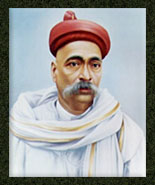 At the beginning of the 19th century (the period of the British colony), Christian
missionaries, in their efforts to spread their religion, played an important role in the development
of Marathi. A well known Christian missionary William Carey was the one in standardizing
the Marathi grammar. Their contribution can be evidenced from the first standard dictionaries
and grammar books, first English book translated into Marathi and first newspaper published
in this language. The late 19th century in Maharashtra was a period of colonial modernity. Like
the corresponding periods in other Indian languages, this was the period dominated by English-
educated intellectuals. In the beginning of the 20th century, Marathi literature and drama well
flourished.
At the beginning of the 19th century (the period of the British colony), Christian
missionaries, in their efforts to spread their religion, played an important role in the development
of Marathi. A well known Christian missionary William Carey was the one in standardizing
the Marathi grammar. Their contribution can be evidenced from the first standard dictionaries
and grammar books, first English book translated into Marathi and first newspaper published
in this language. The late 19th century in Maharashtra was a period of colonial modernity. Like
the corresponding periods in other Indian languages, this was the period dominated by English-
educated intellectuals. In the beginning of the 20th century, Marathi literature and drama well
flourished.
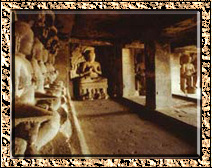 Maharashtri Apabhramsa remained in use for several hundred years until at least 500 CE.
Apabhramsa found wide usage in Jain literature and it constituted the key link in the evolution
of Marathi by having been re-Sanskritised. Standard Marathi and the Warhadi Marathi are the
major dialects of the language. There are a few other sub-dialects like Ahirani, Dangi, Samavedi,
Khandeshi and Chitpavani Marathi. Standard Marathi is the official language of the State of
Maharashtra and co-official language in the union territories of Daman and Diu and Dadra Nagar
haveli. In Goa, though Konkani is the sole official language, Marathi also is permitted to be used for all official purposes. The Constitution of India recognizes Marathi as one of India's 22 official languages.
Maharashtri Apabhramsa remained in use for several hundred years until at least 500 CE.
Apabhramsa found wide usage in Jain literature and it constituted the key link in the evolution
of Marathi by having been re-Sanskritised. Standard Marathi and the Warhadi Marathi are the
major dialects of the language. There are a few other sub-dialects like Ahirani, Dangi, Samavedi,
Khandeshi and Chitpavani Marathi. Standard Marathi is the official language of the State of
Maharashtra and co-official language in the union territories of Daman and Diu and Dadra Nagar
haveli. In Goa, though Konkani is the sole official language, Marathi also is permitted to be used for all official purposes. The Constitution of India recognizes Marathi as one of India's 22 official languages.
Apart from almost all universities in Maharashtra State, the universities in other states such as Maharaja Sayajirao University of Baroda (Gujarat), Osmania University (Andhra Pradesh), Gulbarga university (Karnataka), Devi Ahilya University of Indore and Goa University (Panaji) share the credit of having special departments for higher studies in Marathi linguistics.
 Literature
Literature It is beyond the 10th centrury that the origin of Marathi literature is traced to. Around 983 C.E. the literary inscription discovered at the foot of the statue at Shravanabelgola in Karnataka around 983 C.E. is the earliest known Marathi literature.The Marathi literature can be grouped into two ages: Ancient or Old Marathi literature (1000-1800 AD) and Modern Marathi Literature (1800 onwards). The old Marathi literature mainly consisted of devotional, narrative and pessimistic poetries without satire, parody, irony and humor.The rise of the Yadava dynasty (1189-1320 AD) is the first significant event which paved way for the growth of Marathi literature. They adopted Marathi as the court language and patronised Marathi learned men, contributed greatly towards the growth of Marathi literature.
The second event was the emergence of two religious sects known as Mahanubhav Panth and Warkari Panth. Marathi literature in fact had begun with religious writings by the saint-poets belonging to these two sects who, respectively employed prose and poetry as their medium. Mukundaraj, Dnyaneshwar and Namdev are the three poets belonging to Mahanubhava sect. Mukundaraj wrote Vivekasindhu which is considered as the first major work in Marathi. Dnyaneshwar created Bhawarthadeepika which is also popularly known as Dnyaneshwari, a 9000-couplets on Bhagavad Gita. Amritinabhava is his other great work in Marathi. Lila Charitra (1273), Govinda Prabhu Charitra and Siddhanta Sutra Patha are considered as the other important works of Mahanubhava writers.
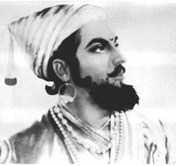 Eknath is a great Warkari saint-poet and his Eknath's Ekanathi Bhagavata is a literary
masterpiece of Marathi literature. Mukteswar, following Eknath's trend, has translated
Mahabharatha into Marathi. Christapurana, a work composed by the Christian missionary Father
Stephens (1549-1619) is another masterpiece of Marathi literature. Tukaram (1608-1651) was
the greatest saint-poet of Marathi, who wrote over 3000 abhangas. Poet Ramdas (1608-1681), in
the footsteps of Tukaram has rendered, inspiring literary works such as Dasabodh and Manache
Shlok in an enriched literary language.
Eknath is a great Warkari saint-poet and his Eknath's Ekanathi Bhagavata is a literary
masterpiece of Marathi literature. Mukteswar, following Eknath's trend, has translated
Mahabharatha into Marathi. Christapurana, a work composed by the Christian missionary Father
Stephens (1549-1619) is another masterpiece of Marathi literature. Tukaram (1608-1651) was
the greatest saint-poet of Marathi, who wrote over 3000 abhangas. Poet Ramdas (1608-1681), in
the footsteps of Tukaram has rendered, inspiring literary works such as Dasabodh and Manache
Shlok in an enriched literary language.
Vaman Pandit (Yathartha Dipika), Raghunath Pandit (Nala Damayanti Swayamvara) and Shridhar Pandit (Pandavpratap, Harivijay and Ramvijay) were the other prominent poets of the 18th century. The Old Marathi literature is represented by both prose and poetry. During the period from 1794 to 1818, old Marathi literature gave way to entry of Modern Marathi literature. Mahipati Buva Tahrabadkar (1715-1790), Niranjana Madhava (1703-1790) and Moropant (1729-1794) were the great writers of this period. Moropant's Mahabharata was the first epic poem in Marathi. Moropant's Arya Bharata, Kekavali and Samsaya Ratnamala are other works of great literary merit.
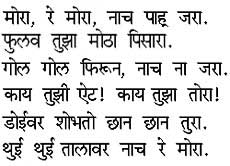 The modern period starts from the 18th century. During the early modern period
prose, poetry, scientific and technical literature all witnessed a growth. Many a translation of
English literary works into Marathi were done. Chhatre, Bal Shastri Jambhekar (1810-1846),
Lokahitawadi, Krishna Hari Chiplunkar and Jyotiba Phule were the famous writers in Marathi
who were proficient in different disciplines of literature. The first Marathi dictionary and the
first Marathi grammar appeared in 1829, while the first Marathi newspaper was started in
1835.
The modern period starts from the 18th century. During the early modern period
prose, poetry, scientific and technical literature all witnessed a growth. Many a translation of
English literary works into Marathi were done. Chhatre, Bal Shastri Jambhekar (1810-1846),
Lokahitawadi, Krishna Hari Chiplunkar and Jyotiba Phule were the famous writers in Marathi
who were proficient in different disciplines of literature. The first Marathi dictionary and the
first Marathi grammar appeared in 1829, while the first Marathi newspaper was started in
1835.Lokmanya Tilak`s newspaper Kesari, lent a hand in the development of Modern Marathi Literature. It is Keshavasuta (1866-1905) who is the kingpin for the launch of the Modern Marathi poetry movement. Madhav Julian's poetic tale Virahatarang is a work worth mentioning. B.R.Tambe (1874-1941), Chandra Shekar Gorhe (1871-1937), Manorambai Ranade (1896- 1926) were those among the prominent poets. A new form of poetry in Marathi was introduced during early 19th century. Phulwata by Anil (1901-1982) and Chandarat by Anant Kanekar (1905-1980) are considered as the pioneers of this style. Bal Gangadhar Tilak, V.D.Savarkar, G.T.Davekar (1874-1956), S.N.Ranade (1892-1984) and N G Deshpande are the nationalist poets. B S Mardhekar, P S Rage, N.C.Kelkar (1872-1947), S.K.Kolhatkar, C.V.Joshi, Vinda Karandikar, Vasant Bapat and Shanta Shelke are some of other the well-known names of the last phase of the Modern Period of Marathi literature.
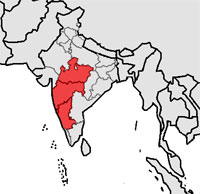 Marathi literature in the field of drama saw an opening with Vishnudas Bhave's work.
B P. Kirloskar (Saubhadra, Sakuntala and Ramarajaya-Viyoga), G B Deval (Sharada), R G
Gadkari (Ekach Pyala), Mama Warerkar (Apporva Bangal) and P L Deshpande (Amaldar)
are some great Marathi dramatists. Apart from this, many writers like Vijay Tendulkar and
C.T.Dhanolkar have rendered good plays in Marathi.Hari Narayan Apte's (1864-1919) Madhali Sthiti was the first novel to be published in Marathi followed by his other important novels, Ushankala, Mi and Pan Lakshat Kon
Gheto. Baba Padamji's Yamuna Paryatan, Natha Madhav, C.V.Vaidya, Prof V.M. Joshi, V.S.Khandekar Sane Guruji, Kusumvati Deshpande, Kamalabai Tilak are the prominent novelists of the Marathi language. In the field of short story, Diwakar Krishna, H N Apte and V S Gurjar are the renowned writers. S.M. Mate, Durga Bhagwat, N.S. Phadke are well-known essayists in Marathi.
Marathi literature in the field of drama saw an opening with Vishnudas Bhave's work.
B P. Kirloskar (Saubhadra, Sakuntala and Ramarajaya-Viyoga), G B Deval (Sharada), R G
Gadkari (Ekach Pyala), Mama Warerkar (Apporva Bangal) and P L Deshpande (Amaldar)
are some great Marathi dramatists. Apart from this, many writers like Vijay Tendulkar and
C.T.Dhanolkar have rendered good plays in Marathi.Hari Narayan Apte's (1864-1919) Madhali Sthiti was the first novel to be published in Marathi followed by his other important novels, Ushankala, Mi and Pan Lakshat Kon
Gheto. Baba Padamji's Yamuna Paryatan, Natha Madhav, C.V.Vaidya, Prof V.M. Joshi, V.S.Khandekar Sane Guruji, Kusumvati Deshpande, Kamalabai Tilak are the prominent novelists of the Marathi language. In the field of short story, Diwakar Krishna, H N Apte and V S Gurjar are the renowned writers. S.M. Mate, Durga Bhagwat, N.S. Phadke are well-known essayists in Marathi. 

